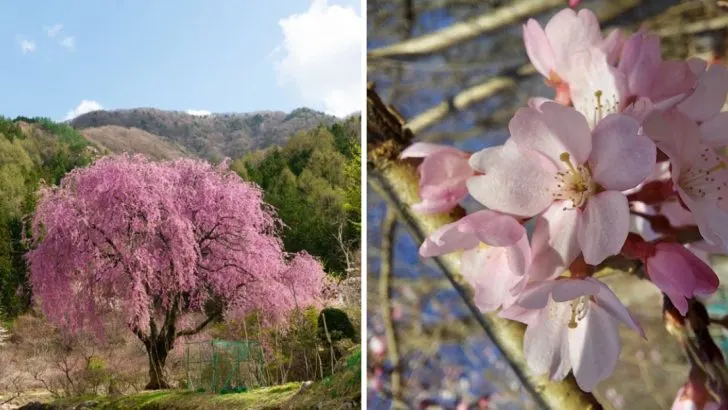Weeping cherry trees are a stunning addition to any garden, with their graceful branches and beautiful blooms. They bring a unique charm that can brighten up your yard through the seasons, but keeping them thriving year after year does take a little know-how. If you’ve been thinking about adding one to your space or you’ve already got one that could use some extra care, you’re in the right place.
In this guide, we’ll cover 15 essential tips to help your weeping cherry tree flourish. From choosing the best spot to understanding the pruning process, these tips will ensure that your tree stays healthy and continues to provide those breathtaking blossoms season after season. With the right attention, your weeping cherry can become the centerpiece of your garden for years to come.
Choose the Right Location

Select a spot that offers full sun to partial shade, as weeping cherry trees thrive in sunlight. Ensure the soil is well-draining to prevent root rot.
Avoid areas prone to waterlogging. Planting near a patio or walkway can showcase their beauty.
Great locations offer protection from harsh winds, which can damage delicate branches. Test the soil pH, aiming for slightly acidic to neutral levels.
Remember, a happy tree starts with a good foundation, so invest time in finding that perfect spot.
Proper Planting Techniques
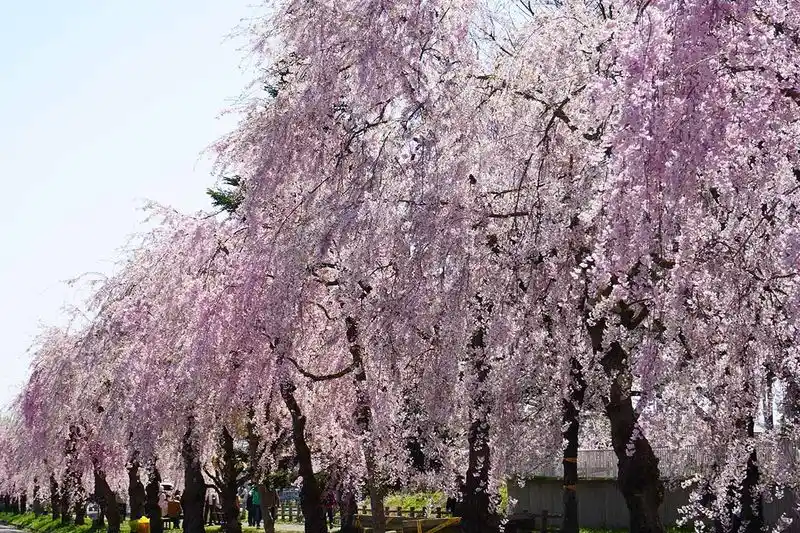
Begin by digging a hole twice as wide as the root ball but no deeper. Position the tree so its root flare is level with the ground.
Fill the hole halfway with soil, water thoroughly, then complete filling. Mulch around the base, leaving space around the trunk to prevent rot.
Planting in early spring or fall ensures the best root establishment. Avoid compacting the soil; let the roots spread naturally.
Proper planting is pivotal for thriving trees.
Watering Wisely
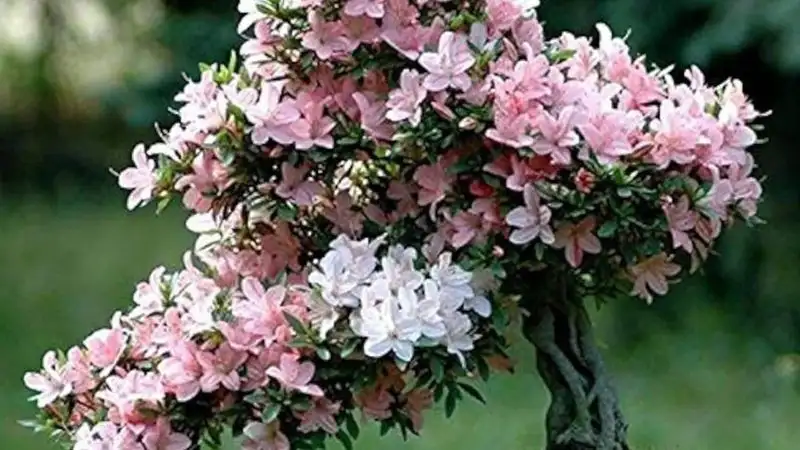
Consistent watering is crucial, especially during the first year. Deep, infrequent watering encourages deeper root growth.
Early morning watering reduces evaporation. Adjust based on rainfall and avoid over-watering, which leads to root rot.
During dry spells, mulch helps retain soil moisture. Inspect the soil moisture level by inserting a finger into the ground; it should feel moist, not soggy.
Learning your tree’s needs ensures optimal growth.
Fertilization Tips

Fertilize in early spring with a balanced, slow-release fertilizer. Follow up with a second application mid-summer if growth is sluggish.
Avoid over-fertilizing; too much can harm the tree. Organic options like compost can enrich the soil without harsh chemicals.
Observe leaf color and growth patterns; yellowing leaves may indicate nutrient deficiencies. Feed your tree well, and it will reward you with vibrant blooms and healthy growth.
Pruning for Health
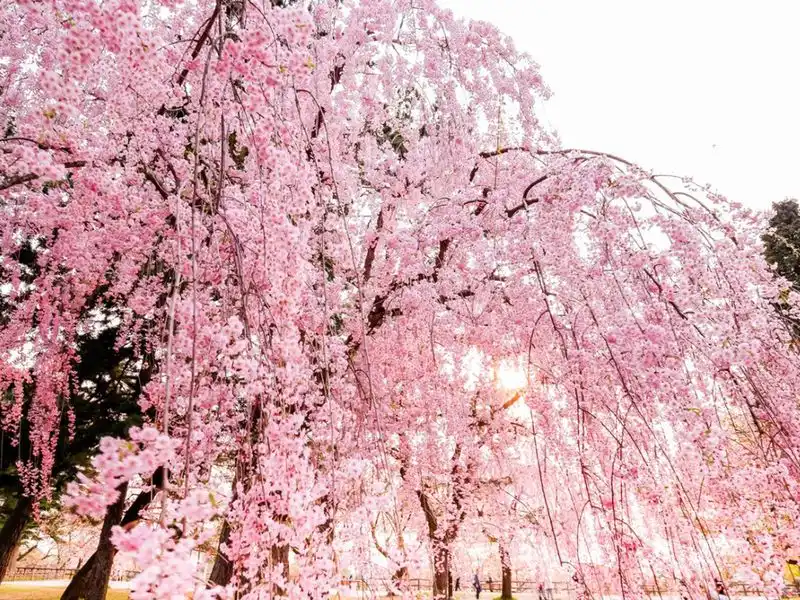
Pruning is essential for maintaining shape and health. Perform light pruning in late winter or early spring before new growth.
Remove dead or crossing branches to improve air circulation. Avoid heavy pruning, which stresses the tree.
Sterilize tools to prevent disease transmission. Pruning encourages new growth and maximizes flower production.
A well-pruned tree not only looks beautiful but also thrives more vigorously.
Pest Management
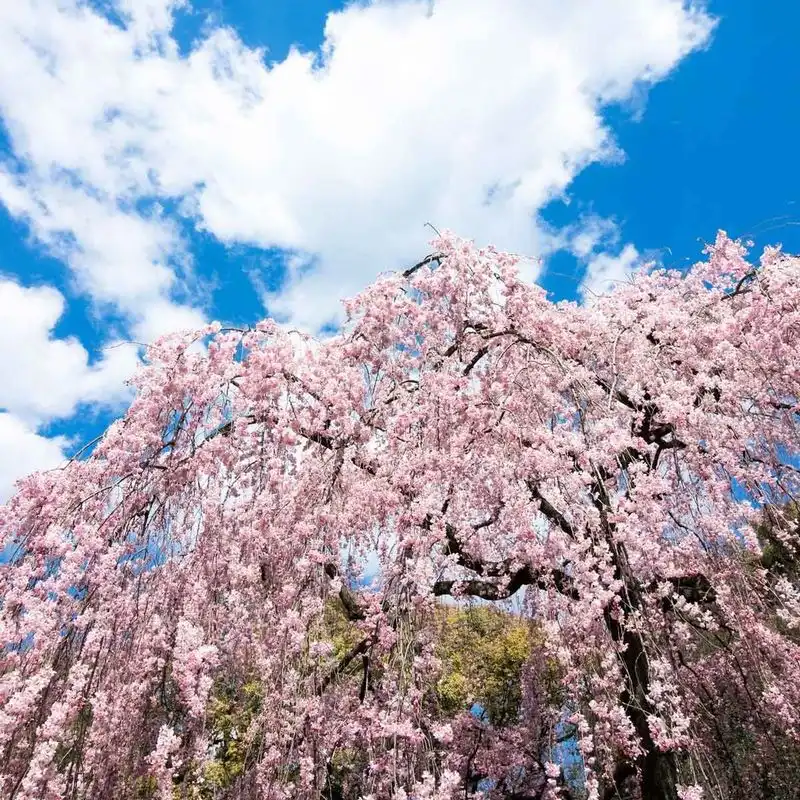
Regularly inspect your tree for pests like aphids, borers, and caterpillars. Use insecticidal soap or neem oil for natural control.
Introduce beneficial insects like ladybugs to reduce pest populations. Remove heavily infested leaves or branches to prevent spread.
Healthy trees are more resilient to attacks, so maintaining overall health is key. Stay vigilant and act promptly to keep your weeping cherry pest-free.
Disease Prevention
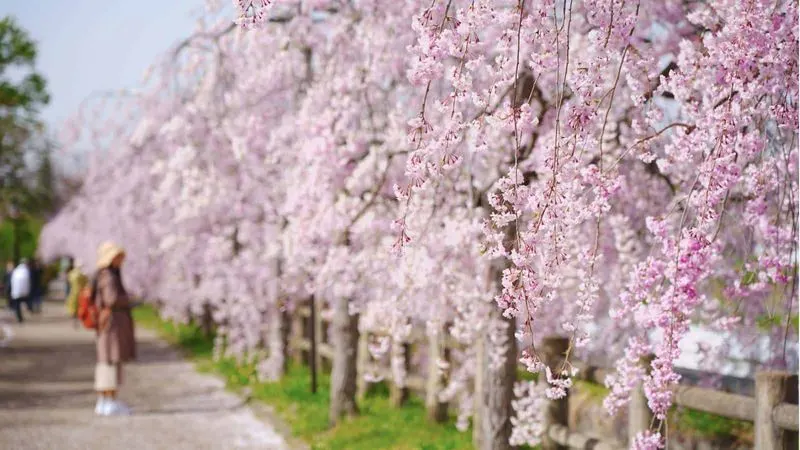
Common diseases include leaf spot and cankers. Ensure proper air circulation by spacing trees adequately.
Remove infected leaves immediately to halt disease spread. Fungicides can help when applied preventively.
Clean up fallen leaves in autumn to reduce overwintering pests and pathogens. Maintain tree vigor through proper care, as strong trees resist disease better.
Prevention is your best defense against common tree ailments.
Mulching for Moisture
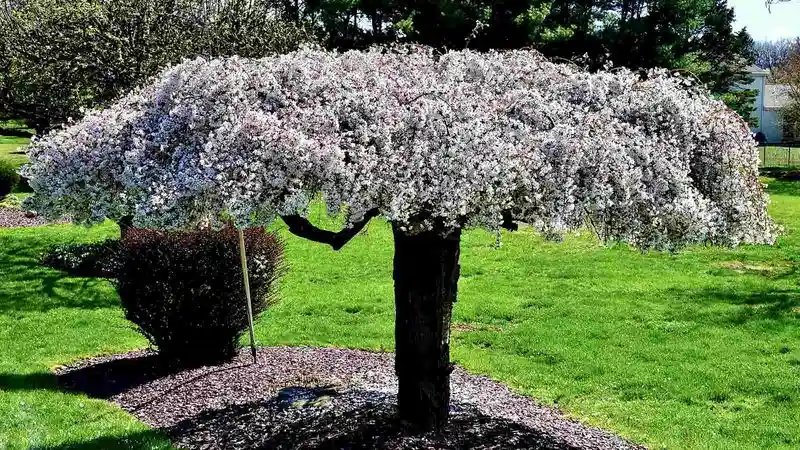
Apply a 2-4 inch layer of organic mulch around the tree base, avoiding contact with the trunk. Mulching helps retain moisture, suppresses weeds, and regulates soil temperature.
Replenish mulch yearly, and choose materials like wood chips or straw. Mulch also enhances the garden’s aesthetic, providing a neat and tidy look.
By mulching correctly, you create an environment that supports your tree’s health and vigor.
Winter Protection

Cold winters can damage weeping cherries, so protection is vital. Wrap young trees in burlap to guard against harsh winds.
Apply mulch generously before frost to insulate roots. For potted trees, move them to a sheltered spot.
Avoid fertilizing late in the season, as new growth is susceptible to frost. With proper winter care, your trees will emerge stronger and ready to bloom come spring.
Creating a Watering Schedule
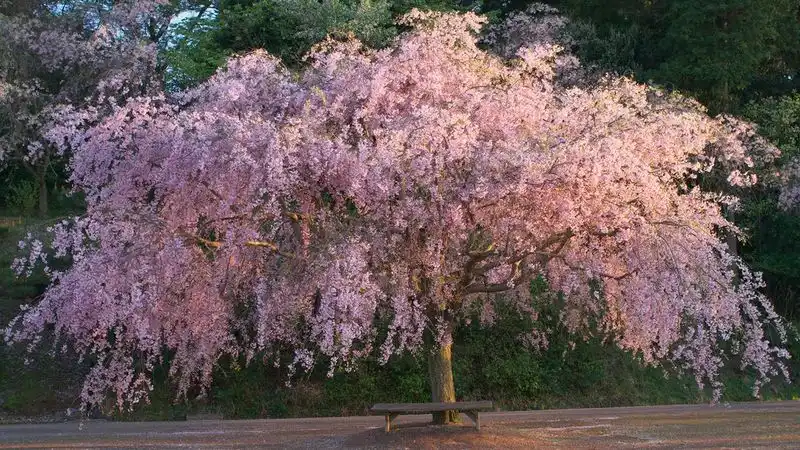
Develop a consistent watering routine based on your climate and soil type. Monitor rainfall and adjust accordingly.
Early morning is ideal for watering, minimizing evaporation and fungal growth. Use a soaker hose for deep, even moisture distribution.
Tailor the schedule as your tree matures, reducing frequency but ensuring deep penetration. A thoughtful schedule supports robust root development and vibrant blooms.
Companion Planting
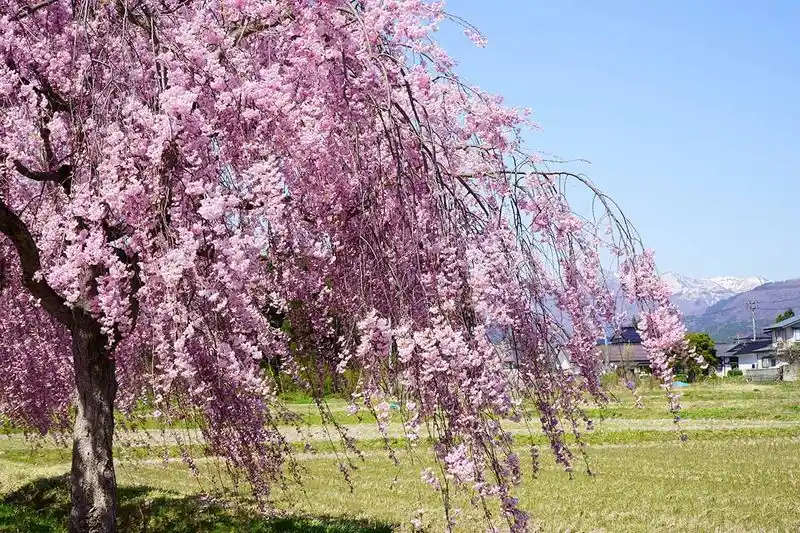
Enhance your cherry tree’s environment with complementary plants. Ground covers like vinca or hostas add beauty and prevent weed growth.
Spring bulbs such as daffodils provide an early burst of color. Ensure companion plants share similar water and soil needs to prevent competition.
This harmonious planting strategy not only elevates your garden’s appeal but also supports healthy tree growth.
Understanding Growth Patterns
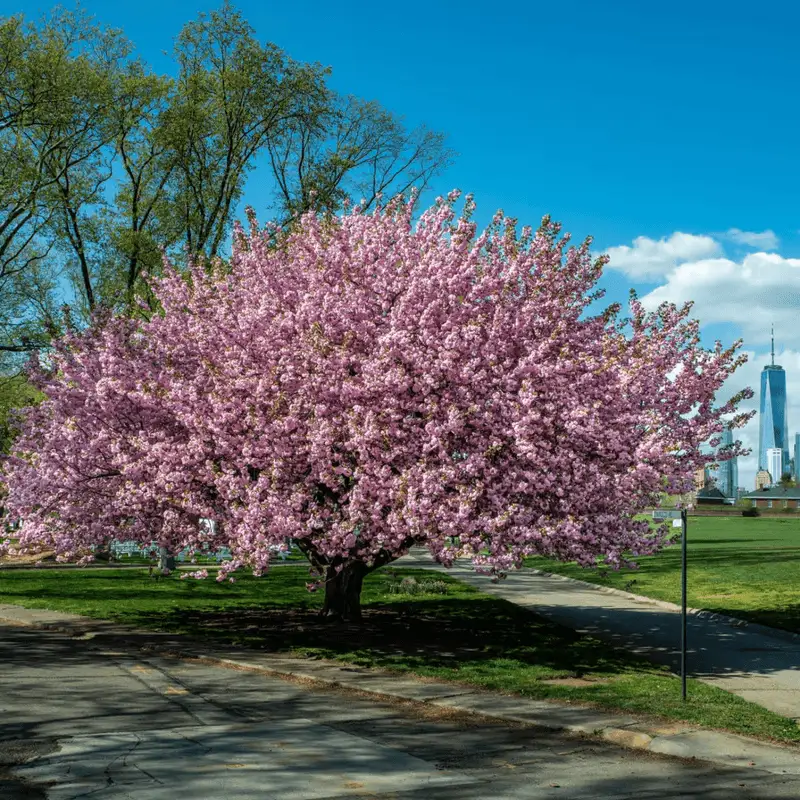
Knowing your tree’s growth habits aids in care. Weeping cherries have a rounded canopy and drooping branches.
Adapt pruning and spacing to accommodate this shape. Expect moderate growth, with annual pruning to maintain desired size.
Understanding these patterns helps with placement and prevents overcrowding. Embrace the tree’s natural elegance by learning its unique characteristics.
Seasonal Care
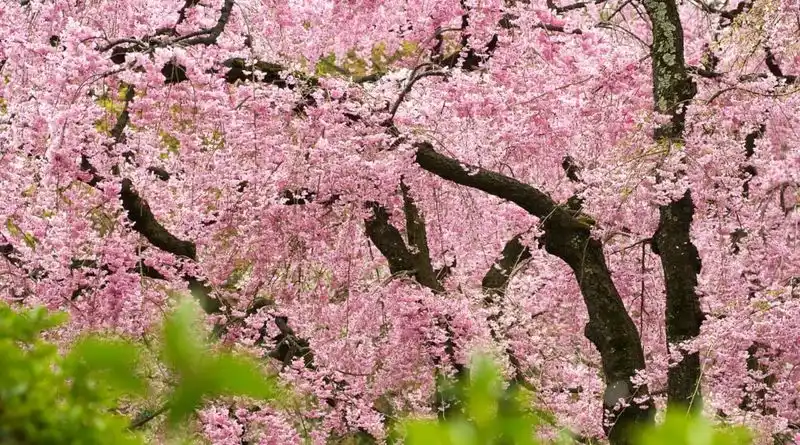
Tailor your care routine to each season’s demands. Spring requires fertilization and pruning.
Summer focuses on watering and pest control. In autumn, clear fallen leaves and mulch generously.
Winter demands protective measures against cold. By addressing seasonal needs, you ensure year-round health and beauty for your tree.
A responsive care plan cultivates resilience and thriving blossoms.
Encouraging Bloom
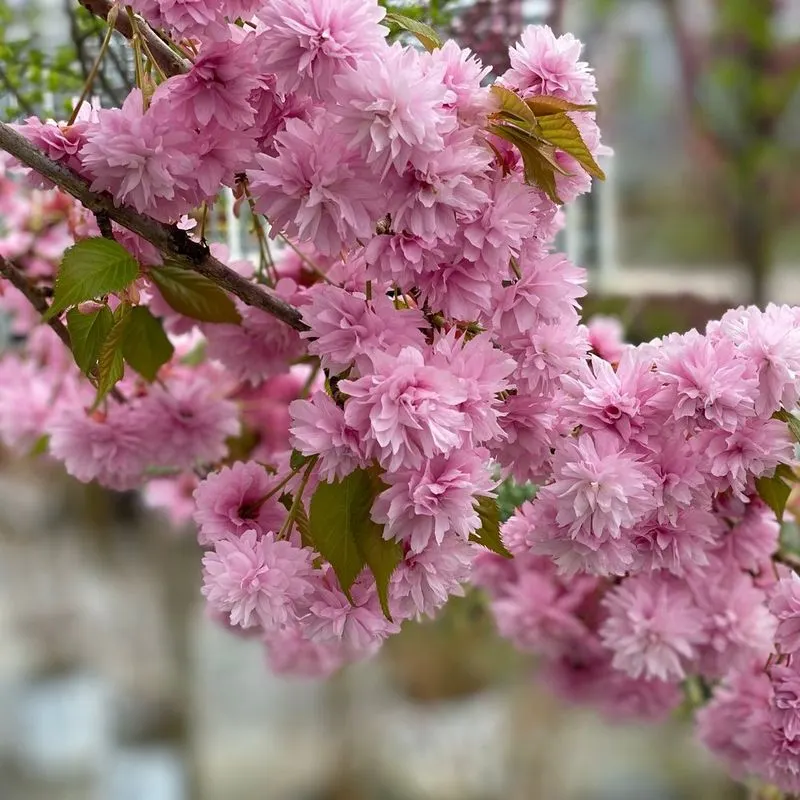
Maximize flower production with strategic care. Ensure ample sunlight and avoid excessive nitrogen fertilizers that favor foliage over blooms.
Regular pruning encourages new growth, leading to more blossoms. Stress-free trees, well-watered and pest-free, exhibit the most vibrant flowers.
Enjoy a stunning floral display by understanding what your tree needs to reach its full blooming potential.
Soil Testing
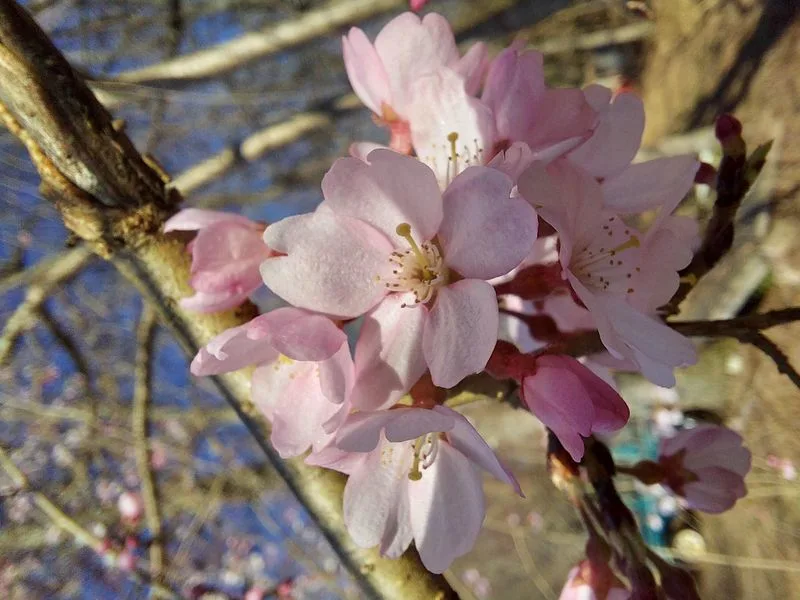
Analyze soil quality regularly to ensure optimal conditions. Test for pH, aiming for 6.
0-7. 0, and adjust with amendments as needed.
Check nutrient levels to guide fertilization strategies. Healthy soil supports robust root systems and vibrant growth.
Testing prevents common issues like yellowing leaves or poor flowering. Equip yourself with knowledge about your soil; it’s the foundation of thriving cherry trees.

